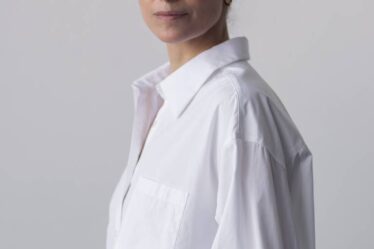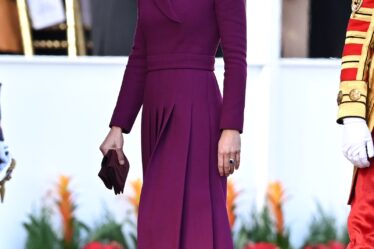
In the world of fashion, the term “sustainable” has become a buzzword of late. But what does it truly mean and why is it suddenly so important? Sustainable fashion refers to the movement and process of fostering change in fashion products and the fashion system towards greater ecological integrity and social justice. It encompasses everything from sourcing raw materials to manufacturing and distribution processes. But how can one learn more about it?
In today’s digital age, a multitude of resources are available to learn about sustainable fashion practices. From online courses to seminars and workshops, like NeedEssayHelp, there are numerous avenues for education. Fashion enthusiasts, students, and professionals alike can expand their knowledge and understanding of sustainable fashion principles and practices. The key lies in finding the right resources and courses that match their interests and career goals.
This article will delve into the avenues for learning about sustainable fashion, the brands that are championing the cause of responsible production, and the importance of a circular economy and recycling in fashion. It will also discuss how these practices are being promoted in the fashion industry. With this knowledge, individuals can make informed choices about their fashion consumption and contribute to a more sustainable and ethical fashion industry.
Sustainable Fashion Courses: Learning about Responsible Production
The journey towards sustainable fashion begins with education. There are various sustainable fashion courses available that offer in-depth knowledge about responsible production. These courses are designed to equip learners with the skills and knowledge to make ethical and sustainable choices in their professional and personal lives.
Sustainable fashion courses cover a wide range of topics, from understanding the environmental impact of textile production to the social implications of fast fashion. They also address the practical aspects of sustainable fashion, such as how to source sustainably-produced fabrics, how to design for longevity, and how to create a sustainable supply chain.
Online platforms like Coursera, Udemy, and FutureLearn offer a variety of sustainable fashion courses. For instance, the University of the Arts London offers a course called “Fashion and Sustainability: Understanding Luxury Fashion in a Changing World,” which explores the critical issues facing the fashion industry and how we can make fashion more sustainable. Other institutions like the London College of Fashion and the Parsons School of Design also offer similar courses.
Ethical Fashion Brands: Supporting Social and Environmental Responsibility
Ethical fashion brands have taken the forefront in supporting social and environmental responsibility. These brands prioritize ethical production practices, fair trade, and sustainable sourcing of materials. They aim to minimize their environmental impact while providing fair wages and safe working conditions for their workers.
Brands like Patagonia, Eileen Fisher, and People Tree are leading the way in ethical fashion. Patagonia, for example, is renowned for its commitment to environmental conservation and ethical business practices. The company uses recycled materials in many of its products, and it encourages customers to recycle their Patagonia products when they’re no longer needed.
Eileen Fisher, on the other hand, has made a name for itself by focusing on simplicity and longevity in design, as well as sustainable sourcing and production methods. The brand also supports a number of social initiatives, including programs that empower women and girls.
People Tree, a pioneer in sustainable Fair Trade fashion, also deserves mention. Their products are made to the highest ethical and environmental standards from start to finish, and they are committed to working with disadvantaged farmers and workers to promote fairer trading conditions.
Circular Fashion Economy: Reducing Waste through Innovative Practices
The concept of a circular fashion economy is based on the principles of designing out waste and pollution, keeping products and materials in use, and regenerating natural systems. It’s about reducing waste through innovative practices and creating a system where clothes are made from safe and renewable materials, and old clothes can be turned into new ones.
In a circular fashion economy, products are designed and created with their next life in mind. This means using materials that can be recycled or biodegraded, and designing products so they can be easily disassembled and the materials reused.
Brands like H&M and Zara are already experimenting with circular fashion models. H&M, for example, has a garment collecting program where customers can drop off unwanted clothes at their stores, regardless of the brand or the condition. These clothes are then recycled into new H&M clothes, closing the loop in the fashion cycle.
Fashion Recycling Programs: Promoting a Sustainable Fashion Industry
Fashion recycling programs play a crucial role in promoting a sustainable fashion industry. Not only do they help to reduce the amount of textile waste that ends up in landfills, but they also provide a source of recycled materials for the production of new clothes.
Many fashion brands have introduced recycling programs to encourage customers to recycle their unwanted clothes. For example, Levi’s has a recycling program where customers can drop off any brand of clean, dry clothing or shoes in their stores, which are then recycled or repurposed.
Fashion recycling programs not only promote sustainability but also educate consumers about the importance of recycling and the impact of their consumption habits. They provide a practical solution to the problem of textile waste and serve as a stepping stone towards a more sustainable fashion industry.
In conclusion, the journey towards a more sustainable and ethical fashion industry is a collective one. It starts with education about sustainable practices and responsible production. It continues with supporting ethical brands and embracing the concept of a circular fashion economy. And it involves participating in fashion recycling programs and making conscious choices about fashion consumption. With the right knowledge and resources, everyone can contribute to making fashion more sustainable.



